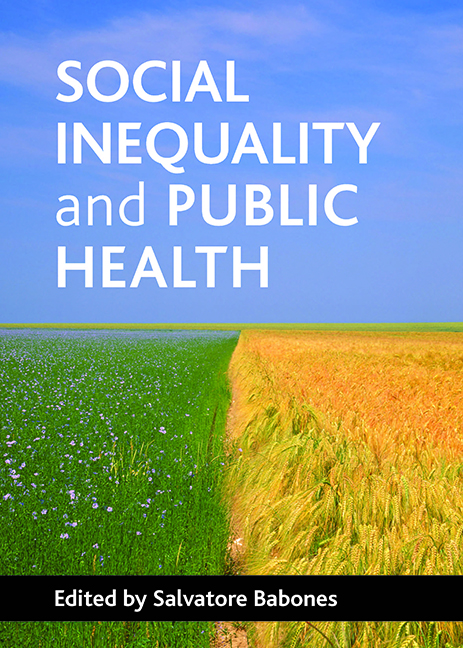Book contents
- Frontmatter
- Contents
- List of figures, tables, maps and boxes
- Preface
- Notes on contributors
- one Introduction
- Pathway 1 Differences in individual health behaviours
- Pathway 2 Group advantage and disadvantage
- Pathway 3 Psychosocial factors in individual health
- Pathway 4 Healthy and unhealthy societies
- Conclusions Public understanding of the new public health
- Index
six - The metaphor of the miner’s canary and black–white disparities in health: a review of intergenerational socioeconomic factors and perinatal outcomes
Published online by Cambridge University Press: 22 January 2022
- Frontmatter
- Contents
- List of figures, tables, maps and boxes
- Preface
- Notes on contributors
- one Introduction
- Pathway 1 Differences in individual health behaviours
- Pathway 2 Group advantage and disadvantage
- Pathway 3 Psychosocial factors in individual health
- Pathway 4 Healthy and unhealthy societies
- Conclusions Public understanding of the new public health
- Index
Summary
Introduction
In the book The miner's canary, Lani Guinier and Gerald Torres (2002) use the metaphor of the miner's canary to describe the predicament of racially marginalised people in the US. Years ago, a canary would be taken into the mines to alert miners to dangerous atmospheric conditions. Since the canary's more sensitive respiratory system would cause it to collapse from any poisonous gases long before humans could be affected, the canary's distress was a signal for an immediate departure from the mine. Guinier and Torres (2002, p 12) write that:
[T]he miner's canary metaphor helps us to understand why and how race continues to be salient. Racialized communities signal problems with the ways we have structured power and privilege. These pathologies are not located in the canary. Indeed we reject the incrementalist approach that locates complex social and political problems in the individual. Such an approach would solve the problems of the mines by outfitting the canary with a tiny gas mask to withstand the toxic atmosphere.
This powerful metaphor can be extended to racial and ethnic disparities in health where racialised communities share a disproportionate burden of disease. One compelling case concerns the racial disparities in perinatal outcomes. Widening black–white disparity in infant mortality and its critical measures of increased risk, low birth weight (LBW) (born weighing less than 2,500 grams), very LBW (born weighing less than 1,500 grams) and preterm delivery (born at a gestational age less than 37 weeks) continue to be leading public health challenges in the US (US Department of Health and Human Services, 2000). Black-to-white ratios of infant mortality rates were 1.64 in 1950, 2.07 in 1985 and 2.52 in 1999. Natality data for the US also revealed a stable twofold black–white disparity in infant LBW over the past 34 years. In 1970, LBW rates were 13.9% among births to African American women and 6.85% among births to white women. Similarly, in 2004, LBW rates were 13.4% for black infants and 7.1% for white infants (National Center for Health Statistics, 2007). While research on black–white differences in perinatal outcomes has been extensive, isolating the social causes that can eliminate this disparity remains elusive.
- Type
- Chapter
- Information
- Social Inequality and Public Health , pp. 83 - 96Publisher: Bristol University PressPrint publication year: 2009



